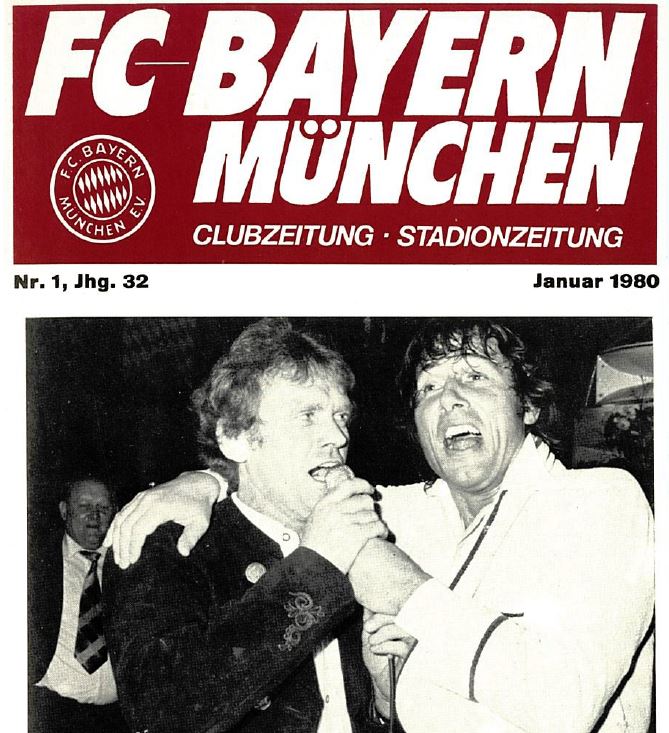
Christmas time at FC Bayern has a long history with some peculiar stories. The archive of the club's museum therefore has plenty to offer at this time of year. But what do key words such as Udo Jürgens, children's choir and betting have to do with Christmas?
Here are some historical - and bizarre - facts about the festive season at the record German champions:
- Big Christmas parties are an age-old tradition at FCB. As early as 1925, a big celebration took place at Hotel Union, then a year later it was held in the renowned Bayerischer Hof. Following the difficult years before, during and after the war, the custom was revived from the middle of the fifties - and rightly so.
- Until 1992, the Christmas celebrations took place at the Löwenbräukeller in the centre of Munich. Some impressive acts performed at the event: Peter Alexander, Udo Jürgens, Howard Carpendale, Reinhard Fendrich, Otto Walkes, Peter Kraus, Nicki and many other famous names had the honour.

- In 1984, it was the Bayern players who were on the stage. Together with the Nymphenburg Children Choir, Udo Lattek's team recorded an album of Christmas songs. The CD, titled 'The most wonderful time of the year - well-known and new Christmas songs', can still be heard at the FC Bayern Erlebniswelt today.
- Because Karl-Heinz Rummenigge had to honour a bet he lost from the German TV show Wetten, dass...?, the team stood together with the Nymphenburg Children Choir on the balcony of the city hall.
- Since 1988, fan club visits have always been lively affairs. 150 of the roughly 260 fan clubs responded to the first invitation in the club magazine, so it had to be decided by a draw. Bayern were expected "from South Tyrol to the Palatinate", as it said in the article.
- There was an ashtray as a Christmas present in 1947 - it's normally in the original boardroom at the FC Bayern Erlebniswelt, a place where many things were smoked...
- 500 players and parents were invited to the youth Christmas party in 1928. "Christmas is a time of giving," it said in the club communication.
- Competitive and friendly games at Christmas were not uncommon in the past - no winter break back then! There were 29 games on Boxing Day between 1907 and 1973, and even nine on Christmas Day.
- Coach Zlatko 'Tschik' Cajkovski gave all his team a watch for Christmas in 1965, including engraving. But because his surname was too long, Peter Kupferschmidt's one just said 'Kupfer'.
- Generosity is also a big part of FC Bayern's festive tradition. One of the more unique projects happened in 1990, when players from FC Bayern and their local rivals 1860 München played a charity match against the Soviet Union national team in aid of the 'Help Russia' project. The game ended in a 1-1 draw, with Bayern president Fritz Scherer handing over a cheque of over 1.24 million Marks to German Chancellor Helmut Kohl.
- Although Bayern haven't always been top of the table at Christmas, they've rarely had reason to be down. The Reds have caught up in the second half of the season and gone on to win the Bundesliga title six times.
- In 1970, however, the Christmas party had to be cancelled at 8pm on 13 December. What happened? At short notice, the German Football Association (DFB) had scheduled a cup tie at Hessen Kassel for the same time. In its place, president Neudecker announced a delayed "new version", or as the club magazine put it: "A spring celebration instead of a Christmas party". This was to be held at the club's new training centre at Säbener Straße.

The Christmas tree in the museum foyer also has a history. Year after year, a beautiful version stands in front of the entrance to the FC Bayern Erlebniswelt, decked in the colours of FC Bayern (what else would it be?). For the guests who come to the Allianz Arena from all over the world during Advent, the Christmas tree is a real showpiece that sets the festive mood. This year, though, there's something extra special at the club museum during the festive period, because as well as an impressive fir tree, there's a showcase of exhibits documenting these Christmas stories.

